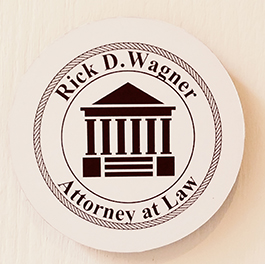What to Do When Your Car Catches Fire
By Ursula Nizalowski
At the height of summer, fires are a constant concern. But while fires usually happen in forests
or houses, cars can catch fire as well. This can lead to serious injuries, severe damage to the
vehicle, and possible death. In 2018, for example, the National Fire Protection Association
( NFPA ) estimated a total of 212,500 vehicle fires that caused “560 civilian deaths 1,500 civilian
injuries; and $1.9 billion in direct property damage in the US.” So in case a vehicle fire does
happen, here is some advice on what to do and how to prevent one from happening.
Causes
Now before we talk about dealing with car fires, it would be good to know how they happen in
the first place. Because while they’re not as common as they used to be due to today’s vehicles
having more safety features installed, car fires can still happen from situations that affect any car.
These include collisions with other vehicles to “problems with a vehicle’s electrical wiring, fuel
system or even cigarettes left in the car” says State Farm . Each one can lead to a fire from the
friction and heat that’s generated, which makes it spread throughout the vehicle in turn.
How to Deal with the Fire
1) Pull Over – As soon as a fire is noticed either outside or inside the car, it’s best to
get off the road. Though preferably a side lane or median , which is a space between two traffic
lanes going in opposite directions. Not only will this prevent further harm to the driver and
passengers, but it will also protect other cars from the fire coming out of one’s car.
2) Turn Off Ignition – Once the car is no longer in traffic, the next step is to shut it
down by turning off the ignition. This will “stop any fluid movement that can feed the fire and lead to an explosion” according to Bryant Law Center . Because things like gasoline and cleaner
fluid are flammable, there’s a high chance it could strengthen the car fire causing further damage
to the car as well as putting the car’s occupants in mortal danger.
3) Get Out – No matter how big the fire is, one shouldn’t linger in the car after it’s
turned off. Apart from getting burned by the flames, there is also the risk of inhaling the toxic
fumes a car fire produces. Thus, it’s arguably safer for everyone to leave the car and get at least
100 feet away to not get hurt and/or poisoned by the fire.
4) Call for Help – Since car fires are extremely dangerous, “It’s generally not
recommended that you try to put out the fire yourself” advises State Farm . It will not only
damage the vehicle more, but also harm the driver if they don’t know what they’re doing. And
so one ought to let professionals handle it by calling 911 to get emergency vehicles out to the
burning car as quickly as possible.
Methods for Preventing Car Fires
Regular Maintenance – One of the most common reasons for a car fire is improper
maintenance of the vehicle. Because if any part of the car isn’t working like it should, it’s likely
to either start a fire or make a fire that starts grow worse. That’s why Consumer Reports says,
“If you spot leaks or your car isn’t running properly, get it checked. A well-maintained car is less
likely to have a fire.”
Not Being Near Flammable Items – Another reason car fires start is when the car
is next to something that’s flammable. This includes grass, which might seem silly but there are
invasive species that dry quickly and “have leaves filled with oily tannins…making it easier for
them to ignite” as explained by Science magazine. Combined with heated car parts like the catalytic converter on the car’s underside and we have a fire waiting to happen, thus it’s arguably
better to steer clear from flammable items like grass, cigarettes, and gasoline.
Proper Gasoline Transportation – While it isn’t strange for cars to carry gasoline
canisters in case of emergencies, it does put the car’s occupants at risk in case a fire happens in
the vehicle. So there are very strict rules for transporting extra gas in one’s car, like having only
a small amount inside the canister and putting the gas inside legally approved containers because
“Gasoline can melt some plastics and similar materials” and “unapproved materials or caps can
lead to dangerous vapor leaks” Outside magazine states.
EV/Hybrid Charger Protocol – Although fires are less common in electric/hybrid
cars compared to gasoline-powered ones “based on currently available data” according to The
Guardian , they could still happen. Because if there’s faulty wiring, an electrical spark could
ignite a fire in the car. For this reason, it’s a good idea to use chargers certified by a nationally
recognized testing laboratory and approved adapters to prevent short-circuiting and the like.
Fire Extinguishers – Like other emergency items, having a fire extinguisher in one’s
car wouldn’t be a bad thing to have. With that said, State Farm suggests the fire extinguisher
needs to be completely secure inside a vehicle that’s “between -40 and 120 degrees Fahrenheit”
in temperature, and the driver should “know how to operate it.” Otherwise, it won’t be effective
in case a car fire does break out.
For further questions on what to do in a car fire-related emergency, feel free to contact attorney
Rick Wagner


